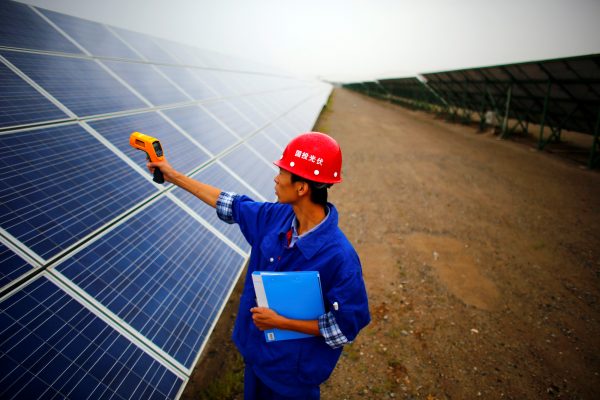As two of the major markets for green finance, China and the European Union are working on adopting a common green taxonomy. The People’s Bank of China (PBoC) has confirmed it will discuss a globally recognised green taxonomy with G20 member countries at the upcoming G20 summit in Rome. This development could have important benefits for the Asia Pacific region to close the massive gap in sustainable infrastructure finance.
Green finance is considered a key element to tackle the dual challenges of climate change and biodiversity loss. It aims to provide relevant incentives to accelerate investments in green economic activities and, ideally, accompanying disincentives to reduce and phase out harmful investments. China, through its green credit system, bond markets and related taxonomies, as well as the European Union through its Sustainable Finance Taxonomy and Sustainable Finance Disclosure Regulation have set global standards and developed the largest green finance markets in the world.
To finance the green transition, massive mobilisation of green finance from global investors is needed, particularly in Asia. But currently, international capital flows are hampered due to frictions caused by different standards and requirements in different markets, leading to high transaction costs.
To overcome these frictions, China and the European Union have worked on harmonising their green finance standards, with some success. In October 2019, the European Union and China, with six other countries, launched the International Platform on Sustainable Finance to coordinate rules and standards on green finance. The European Union and China co-chaired the platform to provide a ‘common ground’ taxonomy by mid-2021.
But harmonising green finance between China and the European Union has been challenging. Since its initial publication in 2015, China’s green bond catalogue encouraged ‘green’ investments in ‘clean coal’ — undermining the EU green finance taxonomy goal to reduce greenhouse gas emissions. To coordinate their green financial systems, the PBoC published an updated green bond catalogue in April 2021 that left out coal. The catalogue also adjusted the categorisation system to match the EU Taxonomy and adopted the EU ‘Do No Significant Harm’ principle to avoid investing in climate-friendly but biodiversity-destroying assets. Yet, gaps still exist.
The EU Taxonomy focuses on the environmental impacts of activities through the provision of specific thresholds for climate mitigation, compared to a project list in the Chinese green bond catalogue. The EU Taxonomy’s agriculture-related criteria focus more on greenhouse gas reduction and less on broader sustainable farming aspects that may be relevant in other markets, including China’s. This includes reduced use of pesticides, biodiversity-friendly techniques and water conservation.
The EU Taxonomy includes six environmental objectives which are interlinked through the multi-dimensional ‘Do No Significant Harm’ requirement. In comparison, China’s green bond catalogue does not explicitly define any environmental objectives.
The EU Taxonomy also recognises three different types of environmentally sustainable economic activities: sustainable, transition and enabling activities. By contrast, the green bond catalogue does not include transition and enabling activities.
As two of the largest green finance markets with advanced regulatory environments, China and the European Union have also been influencing green finance development in other countries. For example, the PBoC and the EU Commission are both members of the International Platform on Sustainable Finance that aims to facilitate dialogue. The European Central Bank and the PBoC are also founding members of the Network for Greening the Financial System. Its goal is to contribute to the development of environment and climate risk management in the financial sector.
With strong green finance track records, Chinese and EU institutions are also working together to share green finance experiences learnt across Asia. For example, in 2019, Tsinghua University supported the development of the Mongolia Green Taxonomy, while the European Bank for Reconstruction and Development supported Mongolia’s green capital market development in 2021.
Developing countries in the Asia Pacific require an additional US$900 billion per year on infrastructure investments. To lower barriers for international investors, green and sustainable finance standards are an essential building block. Greater harmonisation between China and the European Union would allow further mobilisation of green finance.
Accordingly, policymakers and financial institutions in the region should coordinate a China–EU green standard. But with China–EU harmonisation still ongoing, policymakers and investors should not use a lack of standards as an excuse for a lack of green finance action. Climate change will not wait.
Christoph Nedopil Wang is Professor at Fanhai International School of Finance, Fudan University.
Jingying Han is a researcher in the Green Belt and Road Initiative Center at the International Institute of Green Finance, Central University of Finance and Economics, Beijing.

